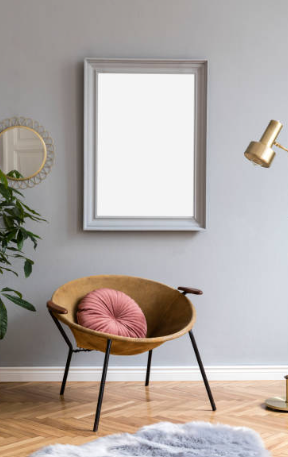Takoma Park House Painters
(301) 479-0039
Interior Painting in Takoma Park, MD
The spaces within your home shape the life that you live and the memories you'll create, and we know it's critical that the mood, setting, and atmosphere of these rooms feels just right. To us, this all begins with nailing the interior painting process across the surfaces, ledges, and walls in these spaces. Our professionals are the team t trust when it comes to bringing the rooms in your home to life, from helping you identify the right colors and stains, to selecting the right materials and paint types, to applying layers with precision and thoughtfulness for the smoothest possible outcomes. So whether you're seeking a serene environment for your bedroom, a n energetic vibe to match the hustle and bustle of your kitchen, or a pop of bold color for your living room accent wall, our Takoma Park House Painters team is the one you can trust to get it done.
What Interior Painting Services Do You Offer?
Our interior painting services cover all of the surfaces and spaces within your home! If you have a wall or walls, window or door frames, cabinets, or something else in mind, we can handle it. For any job, we follow our rigorous process that involves preparation and planning to ensure a clear understanding of your vision, cleaning and pre-treatment of any surfaces we'll tackle, and application of all necessary coats to these surfaces.
Some of our customers are curious to understand more about the different coats we might apply during an interior painting job. To provide guidance, we've helpfully clarified the distinctions between priming, painting, staining, and finishing. Read on to learn more about how and why we take each of these steps while thoroughly executing your work.
Primer
Priming is when we apply a coat applied before painting or staining, in order to seal surfaces, create a consistent base, and ensures adhesion for any layers of paint or staining that follow. Primers vary according to the surface being addressed, as a wood surface and metal surface will require different primers, and they can be oil-based or water-based. Typically, primer occurs before painting more so than staining, as it can help guard against paint bleeding through to the underlying material, improve absorption, and create a more even look. On the other hand, stains may need to permeate surfaces as part of the goal to bring that detailing to life, such as when the surface is unfinished wood. Primer also helps when replacing a darker color with a new, lighter color.

We will get back to you as soon as possible.
Please try again later.
Paint
Anyone who's ever taken an art class in school knows what paint is, but in our process it's the layer that provides coloration to the surfaces we tackle. Paint's color also hides the underlying material; think of applying a bright blue or a bold red to an otherwise natural looking piece of wood. Paints have a range of reflectiveness, with matte paints absorbing lights and offering a duller look, glossy paints shining and glowing, and satin and semi-gloss paints falling somewhere in the middle. While other materials also offer protection, paint can guard against moisture, scrapes, and spots, but it can also chip away over the years.
Stains
Unlike paint, staining a surface showcases the natural look and feel of the underlying material by soaking into the underlying substrate, be it wood, masonry, or concrete. Picture handcrafted wooden furniture that looks glossy and professional but where you can still see the grain pattern, or an exposed brick wall where you can make out the distinctive texture and natural reds. Tones for stains can be light or dark, but what they have in common is that they allow the material's natural character to remain and be the showcase element.
Finishes
This term simply refers to the sheen and final element of the staining or painting you've already done. A varnish, lacquer, or polyurethane finish gives that last, needed layer of protection to the staining layers that came prior. They ensure that the surface is sealed, prevent scratches on the paint or stain previously applied, and even add a polished look that improves aesthetics. Sheens can include matte, eggshell, semi-gloss, satin, and glossy. An effective finishing layer will increase longevity and durability of the entire body of work, ensuring that you're not revisiting the same surfaces for repeated touchups over and over.
Still Have Questions? Reach Out Now!
To learn more about our interior painting work and the options we provide, call us now.

GET A FREE ESTIMATE TODAY
Our utmost priority is meeting your painting goals, which is why Takoma Park House Painters provides a comprehensive suite of house painting services and guaranteed competitive pricing. Our responsive service and professional results are sure to result in total customer satisfaction for interior painting, exterior painting, residential painting, and commercial painting projects. Learn more about how our team can assist you and call us today to receive a free pricing quote!